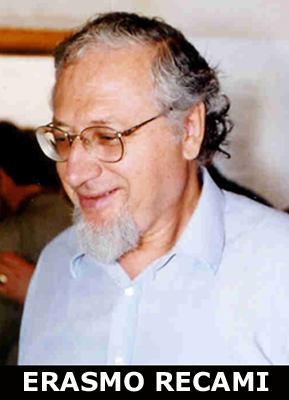Neutrinos faster than light?
.jpg) Neutrinos are elementary particles with no electric charge with a mass so small, that has not yet been able to measure. The term was coined by Enrico Fermi (1901-1954) as a diminutive of the name of another neutral particle, the neutron. Studies of the neutrino are multiple and complex, but we just know that these particles are everywhere in the universe, even in our everyday world. We are constantly bombarded and traversed by the neutrinos emitted from the Sun
Neutrinos are elementary particles with no electric charge with a mass so small, that has not yet been able to measure. The term was coined by Enrico Fermi (1901-1954) as a diminutive of the name of another neutral particle, the neutron. Studies of the neutrino are multiple and complex, but we just know that these particles are everywhere in the universe, even in our everyday world. We are constantly bombarded and traversed by the neutrinos emitted from the Sun
CERN (European Organization for Nuclear Research) in Geneva and the Gran Sasso National Laboratories of study since 2006 these very small particles. Since the neutrino interacts weakly with matter (could cross a thick concrete wall light years without interacting with the atoms that make up), you can send a beam of neutrinos from Geneva to those laboratories of Gran Sasso, making travel neutrinos for more than 730 km in the crust, crossing a trajectory that, because of the curvature of the planet, is actually a rope that penetrates to considerable depth. Upon arrival, awaits them "Opera" a great experimental machine able to "lock in" and study the particles. But the main hub of the discovery is another. The beam of neutrinos emitted from Geneva, according to data collected over more than 15,000 tests, arrived at Gran Sasso with an "advance" of 60 nanoseconds than the speed of light. Italian researchers have compared the time taken by neutrinos (also calculating the errors experimental and statistical) with time which, however, would take a beam of light. In less than 60 nanoseconds for neutrinos.
To try to understand the magnitude of this discovery we need to take a step back, or the law of relativity Albert Einstein's E = mc2.
Physicists Fabrizio Tamburini and Marco Laveder two researchers at the University of Padua in www.arxiv.org site have pointed out that Ettore Majorana, the most brilliant of the "children of Panisperna" students of Enrico Fermi, already in 1932, had developed a theory of elementary particles in which neutrinos could exceed the speed of light without violating relativity Einstein's special because it acquired an "imaginary mass" (is imaginary, just to make a crude analogy, the square root of a number such as - 25).
"Re-reading the notes of almost eighty years ago written by Majorana - explains Tamburini - I am convinced that the theory gave predictions that were in good agreement with the results of the experiment Opera. And the interpretation we give to the work of the Italian physicist is in our opinion quite reasonable. " Neutrinos could become a 'tachyon', that travel beyond the speed of light if you have to cross a very dense material. And that is exactly what happened - said in a statement INAF - Italian-Swiss experiment, where the neutrinos launched from Geneva traveled over 730 km underground.
Flying on the controversial matter of the "density", I would just like to point out that the appearance of the tachyon neutrinos was already pointed out in the 60s, and then 70 and 80, from the most authoritative biographer of Ettore Majorana, the physical Erasmus Recami, born in Catania in 1938, with a lot of experience in teaching and research in universities in other countries (it is a "commuter" Italy-Brazil) and now a professor at the University of Bergamo.
like to point out that the appearance of the tachyon neutrinos was already pointed out in the 60s, and then 70 and 80, from the most authoritative biographer of Ettore Majorana, the physical Erasmus Recami, born in Catania in 1938, with a lot of experience in teaching and research in universities in other countries (it is a "commuter" Italy-Brazil) and now a professor at the University of Bergamo.
Majorana mysteriously disappeared in 1938. But his neutrino reappears periodically. It 'just remember, however, that the reappearance tachyon bears the signature and the priority of Erasmus Recami.


.jpg) Neutrinos are elementary particles with no electric charge with a mass so small, that has not yet been able to measure.
Neutrinos are elementary particles with no electric charge with a mass so small, that has not yet been able to measure.  like to point out that the appearance of the tachyon neutrinos was already pointed out in the 60s, and then 70 and 80, from the most authoritative biographer of Ettore Majorana, the physical Erasmus Recami, born in
like to point out that the appearance of the tachyon neutrinos was already pointed out in the 60s, and then 70 and 80, from the most authoritative biographer of Ettore Majorana, the physical Erasmus Recami, born in 
